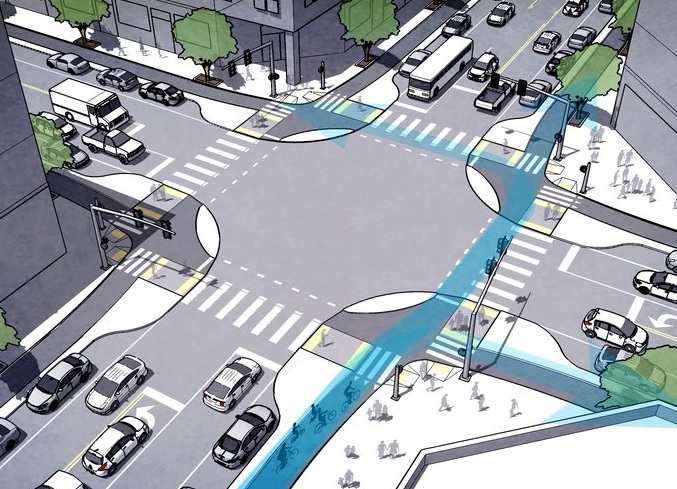The City of Cincinnati and other area municipalities have been working to improve the region’s bicycle infrastructure in order to both make cycling more attractive and safer. Those improvements have included new bike lanes, sharrows, cycle tracks, trails and dedicated parking for bikes.
City officials say that protected bike lanes, like the cycle tracks to be installed along Central Parkway, offer the larger population an incentive to get out on their bicycles. Those officials point to results from public polling that show large percentages of people that would be open to riding bikes if they felt safer on the roads, and that protected bike lanes would do wonders to accomplishing that.
But Nick Falbo, an urban planner and designer at Alta Planning+Design, thinks protected bike lanes aren’t enough.
“Protected bike lanes lose their benefits when they reach intersections,” Falbo states in his six-minute-long video proposal. “The buffer falls away and you’re faced with an ambiguous collection of green paint, dashed lines and bicycle markings.”
In his submission to the George Mason University 2014 Cameron Rian Hays Outside the Box Competition, Falbo proposes what he calls the Protected Intersection – a design overhaul for intersections that he says will not only improve the value and safety of protected bike lanes, but also make the intersection more usable for all modes of traffic.
“It doesn’t matter how safe and protected your bike lane is, if intersections are risky, stressful experiences. We need to make intersections just as safe and secure as the lanes that lead into them. What the protected bike lane needs is a protected intersection.”
